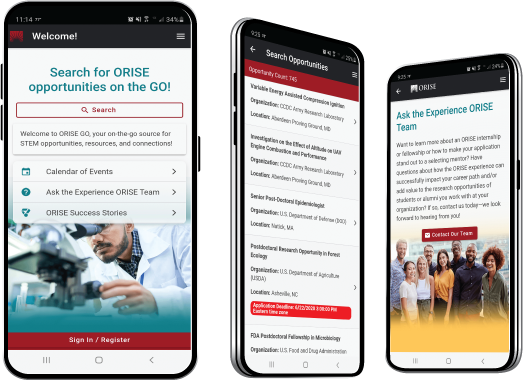Improved Spatial Resolution for Optical Surveillance Using Distributed Apertures
Create and release your Profile on Zintellect – Postdoctoral applicants must create an account and complete a profile in the on-line application system. Please note: your resume/CV may not exceed 3 pages.
Complete your application – Enter the rest of the information required for the IC Postdoc Program Research Opportunity. The application itself contains detailed instructions for each one of these components: availability, citizenship, transcripts, dissertation abstract, publication and presentation plan, and information about your Research Advisor co-applicant.
Additional information about the IC Postdoctoral Research Fellowship Program is available on the program website located at: https://orise.orau.gov/icpostdoc/index.html.
If you have questions, send an email to ICPostdoc@orau.org. Please include the reference code for this opportunity in your email.
Research Topic Description, including Problem Statement:
The larger the primary lens or mirror diameter of an optical system, the better its diffraction-limited spatial resolution and the more detail there can be in the image. However, increasing the diameter of the single primary lens or mirror beyond a certain point becomes impractical due to factors such as weight, portability, optical aberrations, robustness, system volume and expense. Using larger monolithic primary lenses or mirrors for covert, mobile, standoff, high-spatial resolution surveillance becomes less viable.
This work will break this limitation by combining several smaller optical systems to achieve higher spatial resolution imaging. This disruptive approach using distributed apertures could not only create a system with smaller volume, weight and cost, but one that is conformally integrated into the surfaces of vehicles or other items for covert disguise.
There are many different distributed aperture techniques, but most would not be practical for mobile platform operation of standoff high-spatial-resolution surveillance in the visible to long-wave infrared wavelength range. The challenges of making a practical mobile distributed aperture optical system include:
- Mechanical vibration and thermal effect resistance without requiring a rigid structure that is heavier than a conventional monolithic telescope.
- Having a low setup and alignment time.
- Fast acquisition time to capture fast-moving images.
- Having no nulls in its 2D MTF plot out to its maximum spatial frequency.
- Consideration of atmospheric turbulence compensation.
Example Approaches:
Example approaches include distributed apertures techniques that seek to replace one large telescope with an array of smaller apertures (lenses, mirrors or cameras etc.) or to use multiple illumination angles. This includes:
- Heterodyne imaging interferometry with passive scene illumination.
- Fourier Ptychography aperture synthesis snapshot imaging with active coherent scene illumination.
- Michelson Fourier-domain interferometric imagery using photonic integrated circuit (PIC) boards to form a planar (flat) telescope with passive scene illumination.
Key Words: Distributed apertures, synthetic apertures, sparse apertures, electro-optical surveillance, heterodyne imaging interferometry, Fourier ptychography, Fizeau interferometer, Michelson interferometer, photonic integrated circuits.
Postdoc Eligibility
- U.S. citizens only
- Ph.D. in a relevant field must be completed before beginning the appointment and within five years of the appointment start date
- Proposal must be associated with an accredited U.S. university, college, or U.S. government laboratory
- Eligible candidates may only receive one award from the IC Postdoctoral Research Fellowship Program
Research Advisor Eligibility
- Must be an employee of an accredited U.S. university, college or U.S. government laboratory
- Are not required to be U.S. citizens
- Citizenship: U.S. Citizen Only
- Degree: Doctoral Degree.
-
Discipline(s):
- Chemistry and Materials Sciences (12 )
- Communications and Graphics Design (3 )
- Computer, Information, and Data Sciences (17 )
- Earth and Geosciences (21 )
- Engineering (27 )
- Environmental and Marine Sciences (14 )
- Life Health and Medical Sciences (45 )
- Mathematics and Statistics (11 )
- Other Non-Science & Engineering (2 )
- Physics (16 )
- Science & Engineering-related (1 )
- Social and Behavioral Sciences (30 )

 ORISE GO
ORISE GO

The ORISE GO mobile app helps you stay engaged, connected and informed during your ORISE experience – from application, to offer, through your appointment and even as an ORISE alum!





